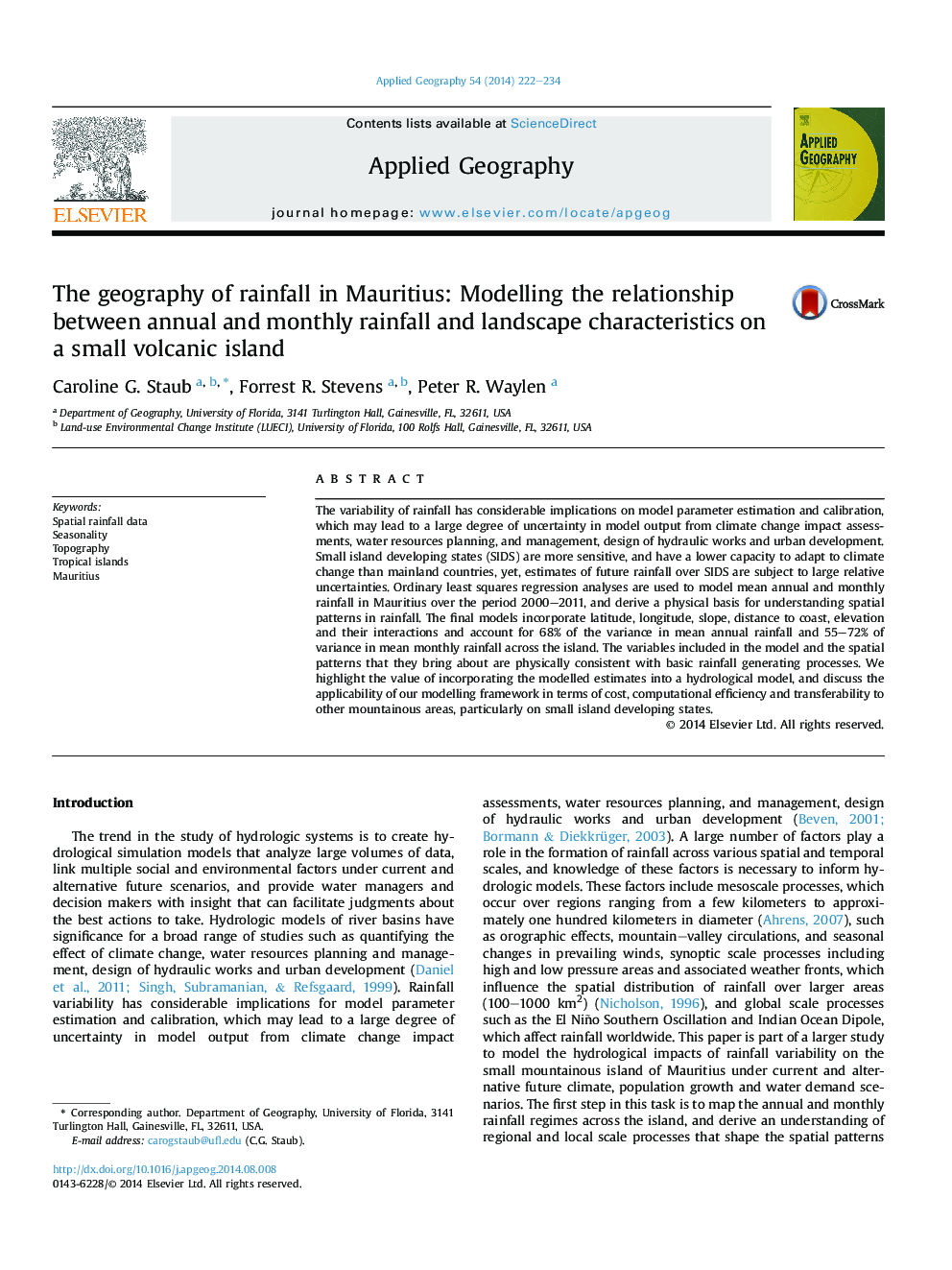| Article ID | Journal | Published Year | Pages | File Type |
|---|---|---|---|---|
| 83298 | Applied Geography | 2014 | 13 Pages |
•We generate physically consistent estimates of mean annual and monthly rainfall for Mauritius.•We exploit the relationships between rainfall and landscape characteristics.•We account for spatial and temporal non-stationarity in the modeled relationships.•Latitude, longitude, elevation, slope & interactions explain 55–72% of rainfall variance.
The variability of rainfall has considerable implications on model parameter estimation and calibration, which may lead to a large degree of uncertainty in model output from climate change impact assessments, water resources planning, and management, design of hydraulic works and urban development. Small island developing states (SIDS) are more sensitive, and have a lower capacity to adapt to climate change than mainland countries, yet, estimates of future rainfall over SIDS are subject to large relative uncertainties. Ordinary least squares regression analyses are used to model mean annual and monthly rainfall in Mauritius over the period 2000–2011, and derive a physical basis for understanding spatial patterns in rainfall. The final models incorporate latitude, longitude, slope, distance to coast, elevation and their interactions and account for 68% of the variance in mean annual rainfall and 55–72% of variance in mean monthly rainfall across the island. The variables included in the model and the spatial patterns that they bring about are physically consistent with basic rainfall generating processes. We highlight the value of incorporating the modelled estimates into a hydrological model, and discuss the applicability of our modelling framework in terms of cost, computational efficiency and transferability to other mountainous areas, particularly on small island developing states.
